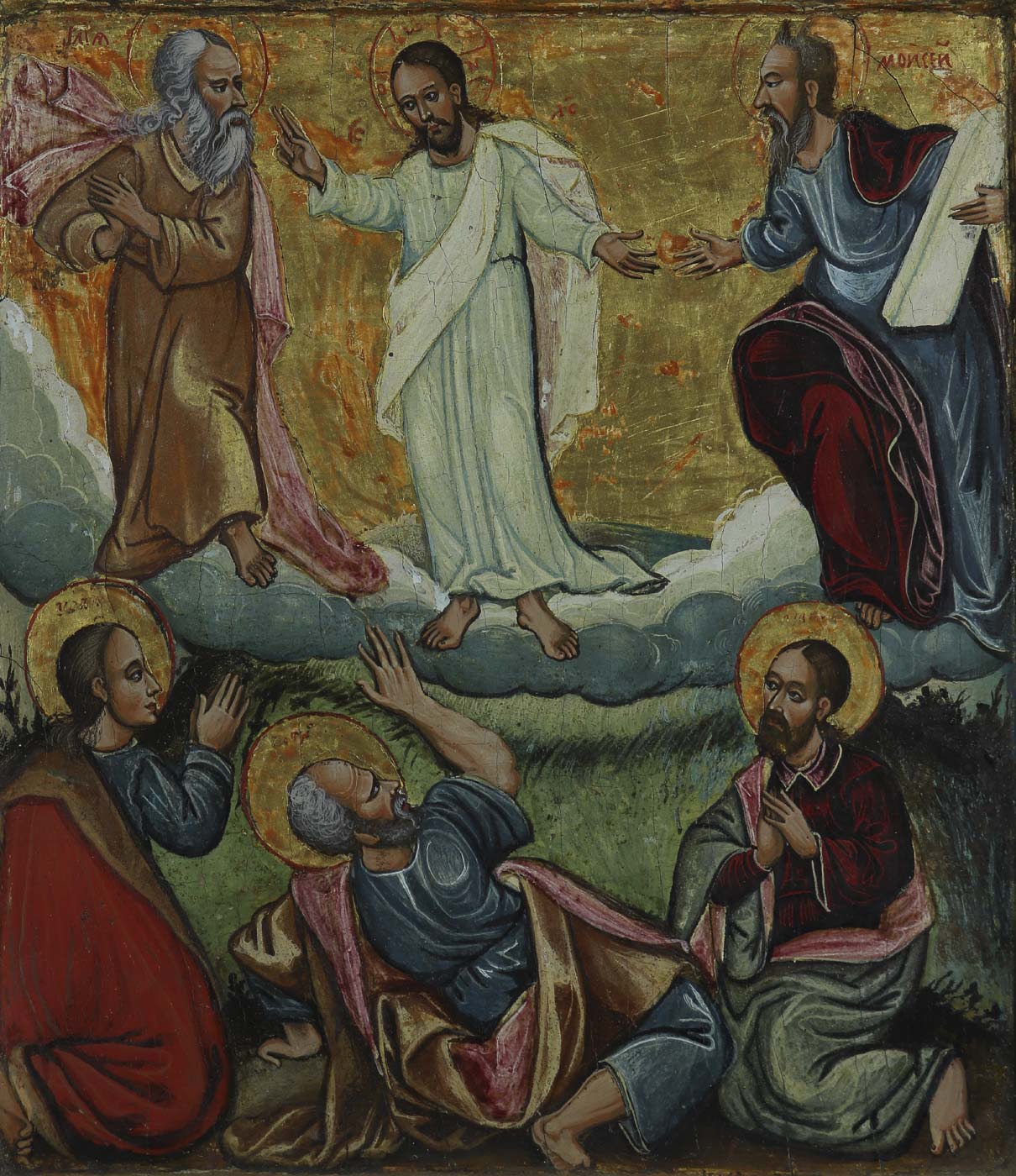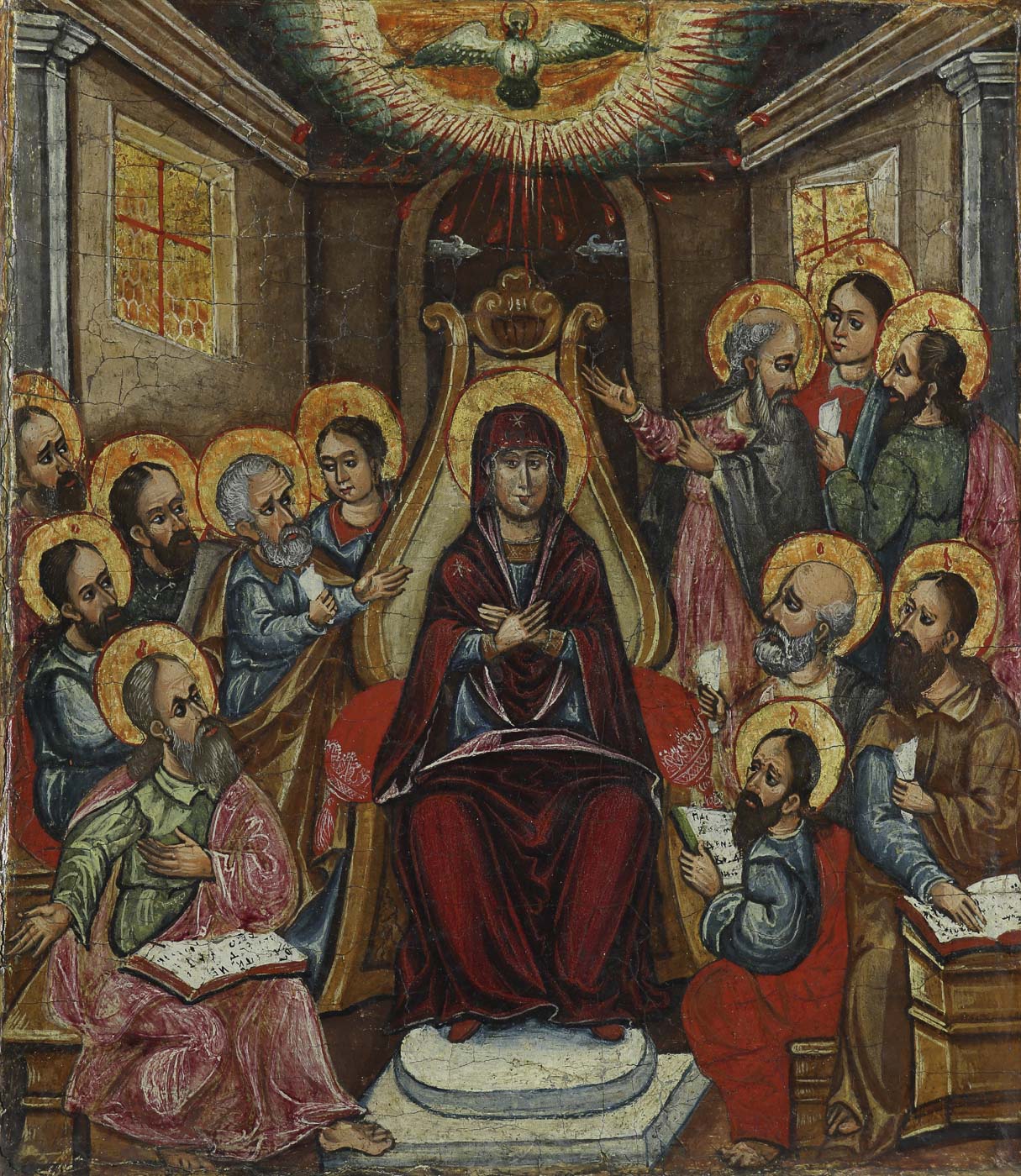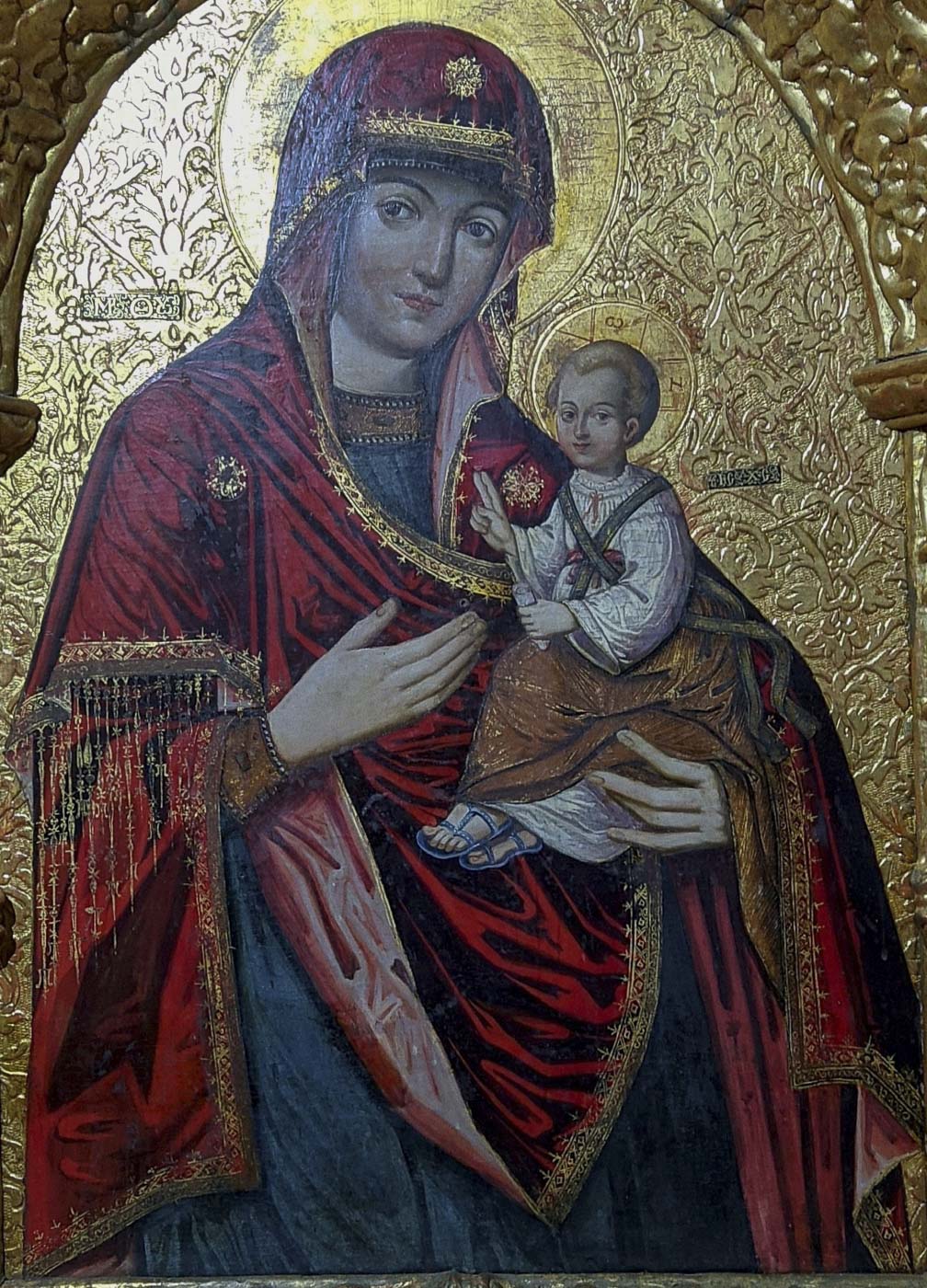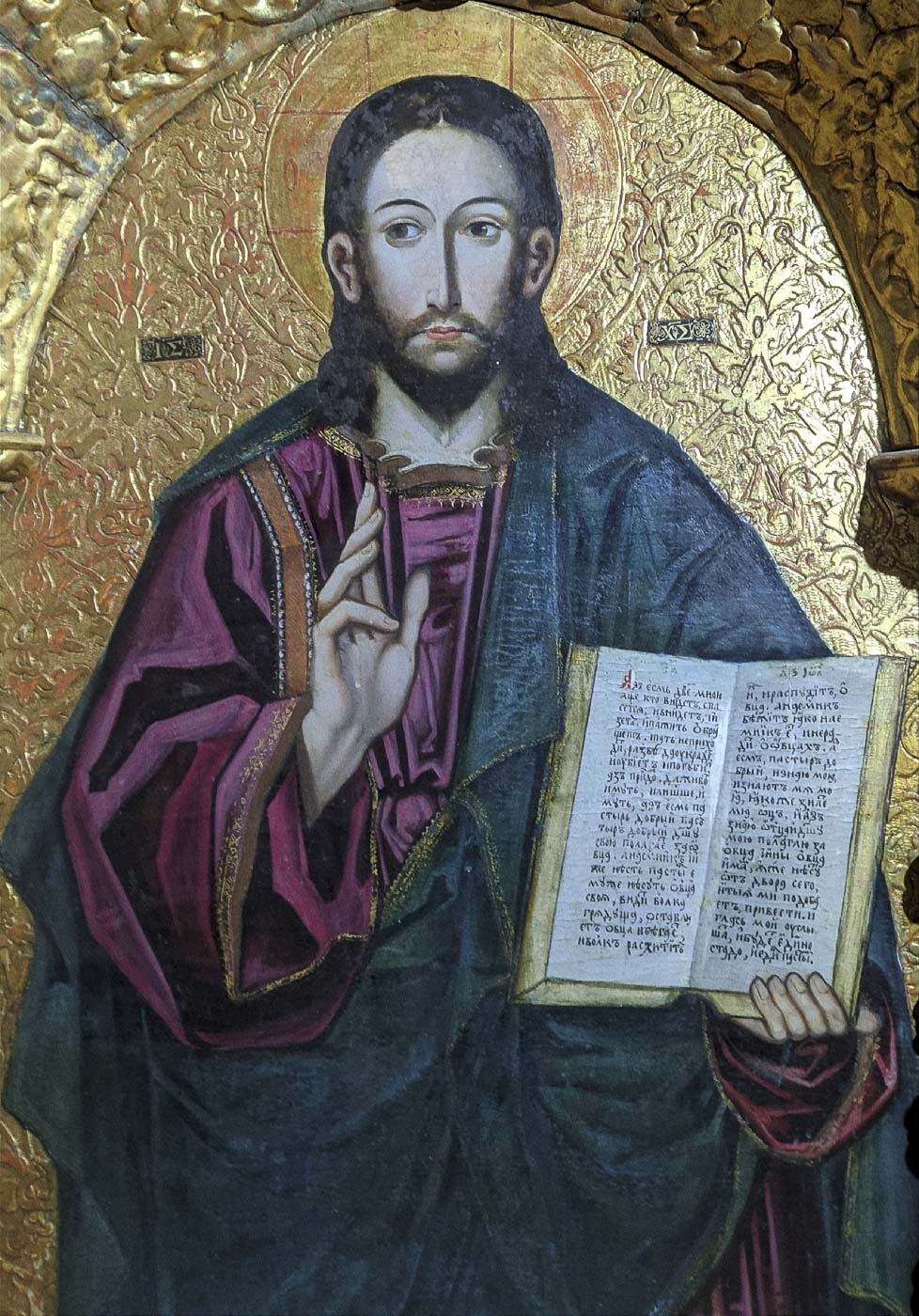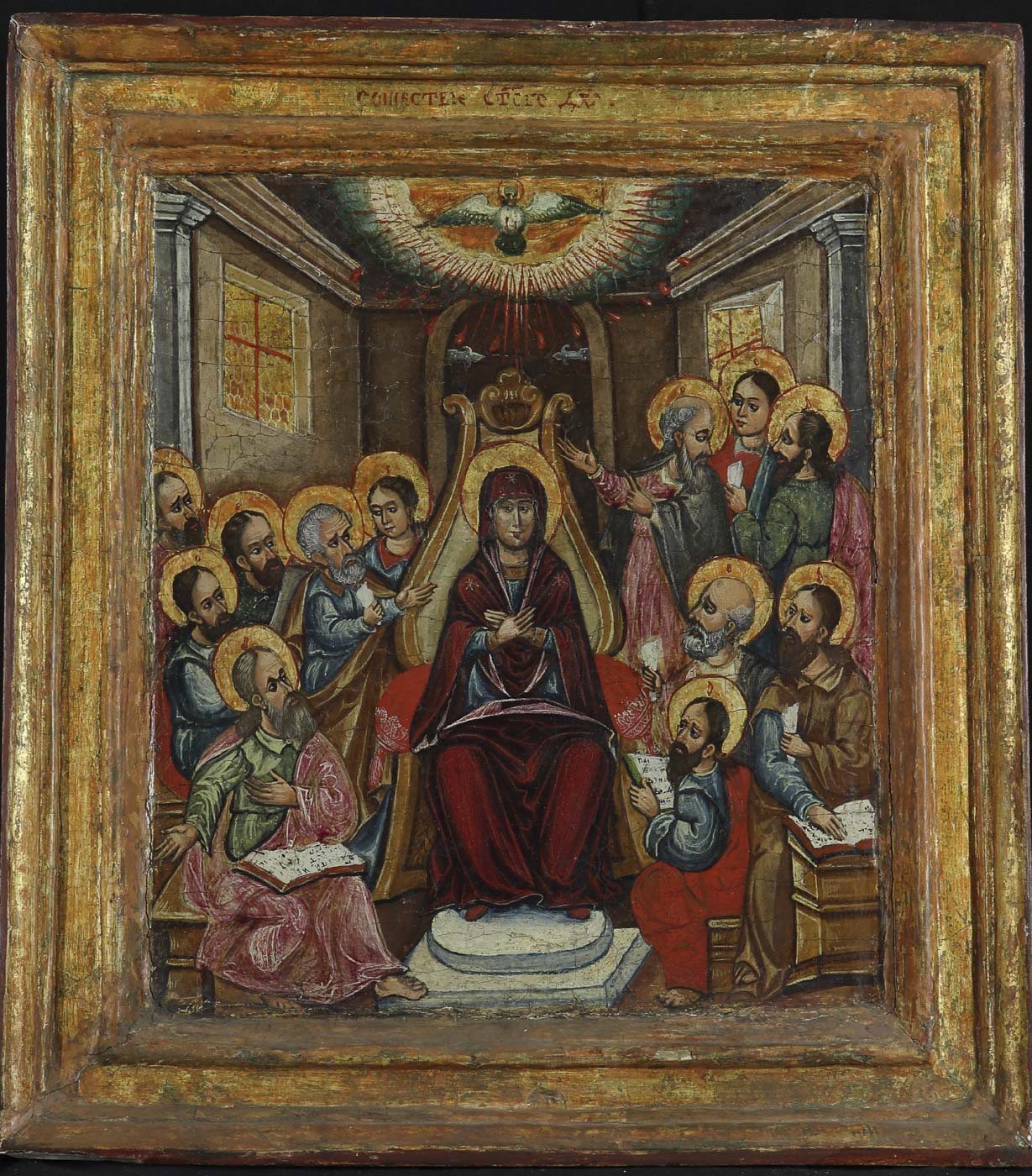Iconostasis from the Church of the Descent of the Holy Spirit in Rohatyn.
Support this project.
Restoration at the Lviv branch of the National Scientific and Research Restoration Center of Ukraine.
State of preservation of the iconostasis
The iconostasis from the Church of the Descent of the Holy Spirit in Rohatyn needs thorough conservation and restoration works (disinfection, strengthening of wood, soil and paint layer, removal of pollution, old varnish coatings, mechanical damage and repainting, carrying out restoration toning), in order to give it a proper exposure appearance, taking into account its extraordinary artistic value and importance for Ukrainian culture, as well as the presence of this church complex in Rohatyn on the UNESCO World Heritage List.
The temple icon “The Descent of the Holy Spirit”, which is the only one in the iconostasis that is completely repainted with oil paint, and due to its realistic style of performance in the spirit of 19th century academicism, should be considered separately. creates a significant dissonance with the rest of the iconography.
see the gallery
History of the iconostasis.
The Church-Museum of the Descent of the Holy Spirit in Rohatyn - a branch of the Prykarpattia Art Museum (Ivano-Frankivsk) - a unique monument of Ukrainian art of the late 16th - mid-17th centuries. – a wooden church complex at the end of the 16th century. (1598), the iconostasis of 1650, and expositions of sacred art of the 16th–19th centuries. exhibited in the premises of the church.
The church is dated 1598, apparently built on the site of an ancient lost church, which may have been ruled by Father Gavrilo Lisovsky, father of Anastasia Lisovsky - Roksolana (1502–1558), wife of Sultan Suleiman the Magnificent, and where she may have been baptized.
Since 2013, the church itself has been on the UNESCO World Heritage List along with other wooden churches of the Carpathian region (16 wooden churches in Poland and Ukraine).
The most valuable thing in the museum complex and the Church of the Descent of the Holy Spirit is, without a doubt, the iconostasis created in 1650 - a unique monument of Ukrainian sacred art of the middle of the 17th century, a vivid evidence of the development of the iconostasis in Western Ukraine in the 17th century, the transition from the centuries-old Byzantine tradition and canon to new powerful European trends (stylistics of the Renaissance, Mannerism and early Baroque).
The iconostasis was created in 1650, as evidenced by the donor's inscription with the date - it was created at the expense of the Rohatyn church brotherhoods, during the reign of the Polish king Jan Casimir (1648–1668).
The iconostasis in Rohatyn has a classical layout, consists of a vestibule and four tiers of icons: a vestry with a temple icon completely repainted in the second half of the 19th century, a royal gate and a deacon's door with an image of the Archangel Michael and the High Priest Melchizedek, a festive one with a central icon of the "Last Supper", an apostolic with the largest icon of the "Deisus" iconostasis, the prophetic series and completion, with the icon of the "Sign of the Virgin" and the Crucifixion.
All the icons and the decorative gilded carving of the iconostasis were created in the same style - a synthesis of the Renaissance and Mannerism with early Baroque influences.
It is not known who the authors of the iconostasis are, since no author's signatures have been found in the iconostasis, nor any documentary information. Considering the stylistics of the painting, it is possible to assume with a high degree of probability that the master icon painters who created this iconostasis were of Lviv origin, each of whom had their own author's handwriting.
Support a specific project.
Adopt a specific project that inspires you or support a larger campaign. Explore the Foundation’s current projects.





